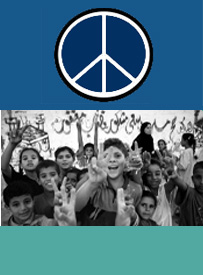|
Social Movements in Latin America and Cultural Works A Project for Spanish 10-12 – Developed by Donna Clark - Teacher’s notes: Social Movements in Latin America and Cultural Works (1 to 10 lessons) Cultural works have always been closely integrated into social movements and Latin American social movements and cultural works are no different. These lessons principally provide context or background information on Spanish-speaking culture in English. Each lesson has multiple sources of information: at least one online link for background information on each social movement; at least one online link for each cultural work, to facilitate a multimedia presentation in a classroom; at least one DVD which can be rented, loaned or purchased; as well as, online songs with lyrics. Each of the 10 social movements and accompanying cultural work/s is a stand-alone lesson. Any one of these lessons can be used by the teacher or student. Students can also work in pairs or in groups. Definitions: Social Justice has 2 beliefs:
Audre Lorde (in her book, Sister Outsider, 1984, p. 45) defines some of these oppressions: “Racism: The belief in the inherent superiority of one race over all others and thereby the right to dominance. Sexism: The belief in the inherent superiority of one sex and thereby the right to dominance. Heterosexism: The belief in the inherent superiority of one pattern of loving and thereby its right to dominance. Homophobia: The fear of feelings of love for members of one’s own sex and therefore the hatred of those feelings in others.”
Social Movements: A group of people within and/or across nations who organize to fight for social justice. Cultural Works: Visual art, graffiti, festivals, songs, music, theatre, films, comics, etc. Background and contact information on teacher who designed these lessons: Donna Clark clarkb@sfu.ca is an active member of the Burnaby Teachers’ Social Justice Committee. She teaches Spanish, Art, French and English at Alpha Secondary. Donna has done solidarity work with Latin America since she was 20-years-old (that was a very long time ago! 25 years!) She has spent a total of 2 years living and working in Latin America. Social Movements in Latin America and Cultural Works Introduction Latin America’s vibrant social movements have a rich tradition of using combining cultural expression with advocacy of social justice and human rights. For Spanish, these social movements can be subjects for a major project, to be done in partners or small groups. Below, you will find brief background material and links to some of the best multi-media resources to help your students understand their chosen social movement with cultural works. 1. Los Zapatistas (Chiapas, Mexico) On January 1, 1994, the Zapatistas started their rebellion in the Mexican state of Chiapas. Their uprising began the same day as the North American Free Trade Agreement (NAFTA) came into effect. The Zapatistas, and their most famous spokesperson, the masked Subcommandante Marcos, initially stage an armed rebellion but have since emphasized non-violent methods of resistance. The Zapatista rebellion has been described as “the world’s first internet revolution” because of the rebels extensive use of the world wide web to spread their message. Essential questions: -Why do the Zapatistas cover their faces? -How have the Zapatistas used art to spread their message? Resources: - “A Place Called Chiapas” (DVD), Homepage: http://www.canadawildproductions.com/chiapas/index.html - Schools for Chiapas http://www.schoolsforchiapas.org/ - Wikipedia Zapatista: https://en.wikipedia.org/wiki/Zapatista_Army_of_National_Liberation
2. Mothers of the Plaza de Mayo (Argentina) The Plaza de Mayo is situated in Argentina’s capital city, Buenos Aires. It is here that the mothers of those “disappeared” during the military dictatorships of the 1970s and early 80s held regular protests to demand justice. Argentina and many other Latin American countries suffered under military dictatorships in this period, during which thousands of political dissidents were jailed, tortured and killed. Many were never accounted for, having simply been “disappeared” by the government. The grand/mothers who protested this repression became powerful symbols of the movement for democracy and human rights. Essential questions: - How did the grand/mothers’ message spread? - Why did the grand/mothers’ protests have such an impact on people? Resources: - Sting, “Ellas Danzan Solas (They Dance Alone)” http://songmeanings.com/songs/view/10439/ Live performance at “Free Mandela” concert: https://www.youtube.com/watch?v=H9y70YjM0bs -U2, “Mothers of the Disappeared” Wikipedia background: http://en.wikipedia.org/wiki/Mothers_of_the_Disappeared - “La Historia Oficial (The Official Story)” (DVD)
3. Che Guevara y La Revolucion Cubana (Cuba) In the late 1950s, a rebel movement overthrew the U.S.-backed Batista dictatorship in Cuba. Within only a couple of years, the movement led by Fidel Castro and Ernesto “Che” Guevara had redistributed land to peasants, taught millions of people to read for the first time, and nationalized most of the U.S. owned banks and industry. Later, the country formally adopted a communist system of government that remains to this day. Che Guevara’s face and image is often to be found on t-shirts and posters around the world. The Argentina-born doctor left Cuba in 1965 to fight failed guerrilla wars in the Congo and then Bolivia, where he was killed in 1967. Guevara’s early adulthood of travelling throughout Latin America was recently told in the major motion picture “The Motorcycle Diaries” (PG14). Essential questions: - What were the conditions of life for ordinary people that caused Che Guevara and so many others to rebel? - What did Cuba’s revolution achieve for the people? What injustices remain today? Resources: - To hear the song Commandante Che Guevara, click here. To read the lyrics, click here. - Silvio Rodriguez, “Fusil contra fusil” - “Fresa y Chocolate” (14A) (DVD) - “Dirty Dancing Havana Nights’’ (DVD) – “Cuba Soy” (DVD) - “Motorcycle Diaries” (PG14) (DVD)
4. Teacher and people’s rebellion in Oaxaca (Oaxaca, Mexico) In 2006, a movement that started in part with a teacher’s strike quickly became a long-running mass movement for the resignation of the state governor. The people of Oaxaca, whose indigenous traditions are strong, organized an almost entirely peaceful resistance against a state that has used arrest, detention and violence against them. Essential questions: - What are the major complaints against the state governor from the people of Oaxaca? Do you think they are legitimate? - How do indigenous concepts of guelatza and tequio guide the protests of Oaxaca’s people? Resources: - “Oaxaca’s Dangerous Teachers”, http://www.dollarsandsense.org/archives/2006/0906bacon.html
5. El Frente Sandanista de Liberacion Nacional (FSLN) (Nicaragua) After many years of struggle, the “Sandanistas” overthrew a dictatorship and came to power in Nicaragua in 1979. The peaceful development of the impoverished country was held back by a vicious proxy war waged by the contras, who were backed by the U.S. government. Many Nicaraguans lost their lives in this conflict, and the Sandanista Revolution ended in 1990. Many people in North America have, for decades, protested the School of the Americas, a training centre in the state of Georgia used by the US to train military leaders from Latin America. Canadian musician Bruce Cockburn sang the controversial, “If I had a Rocket Launcher” to protest the war in Nicaragua and elsewhere. Essential questions: - Are citizens of countries like Canada and the United States responsible for what our governments do in other parts of the world? - Is it ever acceptable to advocate violence? Resources: - Che Guevara - Communist Song Click here to watch the film. - Bruce Cockburn, “If I Had a Rocket Launcher” (song). To watch the video, click here. To read the lyrics, click here. - A look at a similar situation today in Colombia, from Avi Lewis' show On the Map: http://www.youtube.com/watch?v=FOdmr1Uxuf8 6. Las Arpilleras en La Dictadura de Pinochet (Chile) In 1973, Chile suffered a coup that imposed the dictatorship of General Augusto Pinochet. The elected President, Salvador Allende, was murdered along with thousands of his supporters and other opponents of the dictatorships. Folk singer Victor Jara was among those tortured and killed. Later, the women of the shantytowns (poblaciones) of Santiago, Chile and their supporters abroad, used arpilleras, applique wall hangings made from their recycled clothing, to resist the dictatorship and to raise awareness. Essential questions: - Why is art a powerful way to get a message about democracy to the outside world? - How do think the saying, “You can kill a person, but you can’t kill an idea,” applies to what happened in Chile? Is this true? Resources: - An article on Las Arpilleristas: http://www.slate.com/blogs/the_vault/2014/09/10/history_of_quilting_arpilleras_made_by_chilean_women_to_protest_pinochet.html - To view images of Chilean arpilleras, click http://cachandochile.wordpress.com/2010/09/11/chilean-arpilleras-a-chapter-of-history-written-on-cloth/ - To view a video of Victor Jara's song Amanda (with English subtitles), click here. - Victor Jara « las Casitas de Barrio Alto » http://en.wikipedia.org/wiki/V%C3%ADctor_Jara - The last poem of Victor Jara smuggled out the NatoinalStadium: https://www.youtube.com/watch?v=hY84jqSyspI 7. Hugo Chavez and the Bolivarian Revolution (Venezuela) In recent years, Venezuela has been undergoing something called the “Bolivarian Revolution,” led by President Hugo Chavez. The Revolution has provoked great opposition from the United States and the country’s wealthy, but it has also had great support from the poor of Venezuela. The country is now using its vast oil wealth to fund programs for health care and education to help the poor. Essential questions: -Why was there animosity between the Bush administration and the Venezuela government? -What should be the role of the Canadian and American government towards the Boliviarian Revolution under President Hugo Chavez? Resources: - The Revolution Will Not Be Televised: https://www.youtube.com/watch?v=rfFIqfSy9rI - To see an ABC interview with Hugo Chavez, click here.
8. El Presidente Evo Morales (Bolivia) In December 2005, Bolivia for the first time elected an aboriginal President, Evo Morales. The country, one of the poorest in the western hemisphere, has an aboriginal majority that has suffered for centuries as cheap labour in the mines or as poor farmers. Morales and his new government face many challenges in trying to change these conditions. Essential questions: - Why is it so significant to the aboriginal people to have a indigenous person as the country’s leader? - What role does clothing and music play for Evo Morales and the situation in Bolivia? Resources: - To watch the documentary “Dancing with Evo Morales,” click here. 9. Imigracion Latina (Los Estados Unidos) Today, there are many important issues surrounding the tens of millions of Latin American immigrants who have made the United States home. In 2006, there were huge demonstrations demanding equal rights for all immigrants, led by the Latino communities. Essential questions: - How is immigration from Latin America changing U.S. society (language, culture, etc)? - How have immigrants demonstrated their value to the United States? Resources: - "Bread and Roses" (DVD) - “A Day Without A Mexican” (DVD), homepage: http://www.adaywithoutamexican.com/. - Video resources on the immigration debate in the United States: http://www.youtube.com/watch?v=fQm7BSpACnQ
Criteria Los Movimientos Sociales de America Latina y Obras Creativas (Espanol) Part I - Answer in complete English sentences. Hand in before you do Presentation. – 40 marks 1. Explain in your own words the meaning of “social justice”? (5 marks) 2. Explain in your own words the meaning of “social movement”? (5 marks) 3. Explain the connection between social justice, your social movement and a creative work. (20 marks) 4. How does this social justice issue or social movement connect to your life? (10 marks) TOTAL: 40 marks Part II – Oral Presentation - 60 marks (see attached rubric) Content 15 marks Organization 15 marks Delivery 15 marks Audi-Visual Aids 15 marks TOTAL: 60 marks GRAND TOTAL: 100 marks
Extension Activities #1 - Poster: Students create a poster in Spanish using the social movement and culture work/s they have chosen. Key Spanish phrases/chants/slogans/graffiti can be used. #2 - Vocabulary: Bonus marks could be given for each Spanish phrase/chant/slogan/graffiti taught to the class.
|
||
|
Funding for this website has been generously provided by the British Columbia Teachers' Federation (BCTF) and with ongoing web support from the British Columbia Teachers for Peace and Global Education Association.
|
||
|
_____________________________________________________________________________________________ © Teaching for Peace All Rights Reserved ~ Email: info@pagebc.ca ~ Design by Ian Marcuse ~ Email: imarcuse@alternatives.com |





















